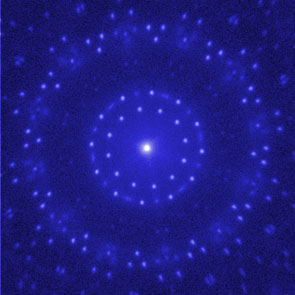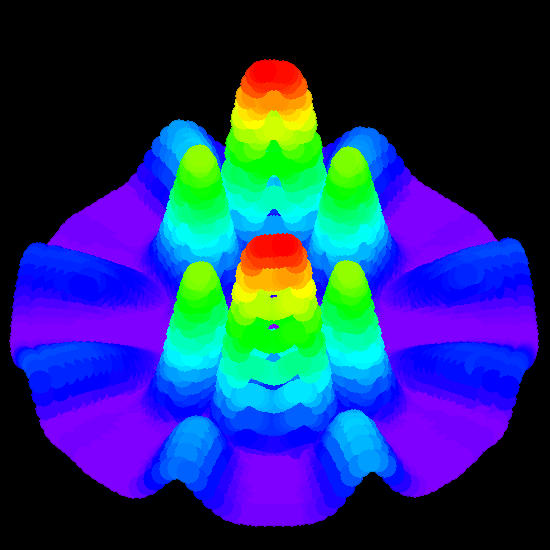Development in measurements of electronic states of weak-interacted system by means of synchrotoron radiation and laser excitation
Experimental progress in the measurement technology to detect small changes in the electronic states upon weak interaction among the FOM. To evaluate the weak interaction precisely, gas-phase UPS apparatus is developped for low-vapor pressure molecular materials, which could be an important reference to discuss small changes in a solid. Study of electronic dynamics at the FOM interfaces, including poralization, electron scattering, hole lifetime, exciton diffusion and so on, has been started by using femto-second pulse laser.
Quasi-dynamic behavior in FOM: Well-ordered crystalline film enables to perform very precise experiments on the electronic structure of the FOM. Quasi-particle states, a dressed charge with local molecular vibrations, may give an interesting view related to the motion of a charge in the FOM. Low-energy excitation in ARPES and photoelectron momentum microscopy will give important aspects.
Related articles:
eJSS(2020), JJAP(2020)
Instruments
UVSOR:BL5U, BL6U, BL7U, BL2B
Labo:2PPE(UC), TRPES(UC), gasUPS
BESSYII:ArTOF
ELETTRA:NanoESCA

Photoelectron emission and scattering process from a pi-conjugated molecular orbital: Development of novel characterization method
Quantitative analysis of the ARUPS intensity using photoelectron scattering theory gives us information on the molecular orbital character and intra(inter-)molecular bonding nature. To understand the orbital distribution and its changes upon adsorption is crucial to reveal electronic structure of organic molecular systems. The method has been adopted successfully to determine the 3d orbital symmetry of organometalic complex, metal-phthalocyanines very recently (in preparation). Photoemission process and related phenomena, in relation to interference and lifetime effect of photogenerated hole from a discrete and localized state, is a hot issue for developing quantum chemistry in large functional molecules to reveal a mathematic description of an electron wave-function. A newly installed apparatus of Photoelectron Momentum Microscope launched at BL6U (UVSOR) will be a powerful tool for them.
Related articles:
Chem.Phys.325,113(2006), JESRP184,261(2011), JESRP195,287(2014) etc
Instruments
UVSOR:BL5U, BL6U, BL7U, BL2B
BESSYII:ArTOF
ELETTRA:NanoESCA
IMS:DA30
Theory:MSMO
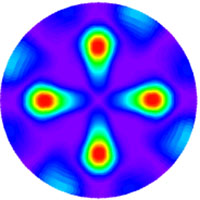
First-principles measurements on charge mobility in organic semiconductor films
To clarify the charge transport mechanism in weakly-interacting molecular solids, high-resolution angle-resolved ultraviolet photoelectron spectroscopy (ARUPS) is considered to be a tool of molecular measurement as a novel technique. Electron-phonon (hole-vibronic) coupling as well as spectral line shape observed in the ARUPS fine features can open a new scientific field, eg. charge dynamics in molecular solids. Precise measurement of angular (momentum) distribution and photoelectron-kinetic energy dependence on the vibronic coupling which may have crucial information of charge transport properties is an ongoing subject. ARUPS measurement to detect an energy-band dispersion which is usually very narrow for molecular crystallites is also curious work to discuss the transport mechanism.
Related articles:
Prog.Surf.Sci.84,135(2009), Prog.Surf.Sci.83,490(2008), PRL.108,226401(2012), PRL.104,156401(2010), AdvMat.24,901(2012), JPCC.117,22428(2013), NatComm.(2017) etc
Instruments
UVSOR:BL7U, BL2B
Labo:2PPE(UC), TRPES(UC), gas G3-UPS, A1-UPS, LEIPS
IMS: DA30
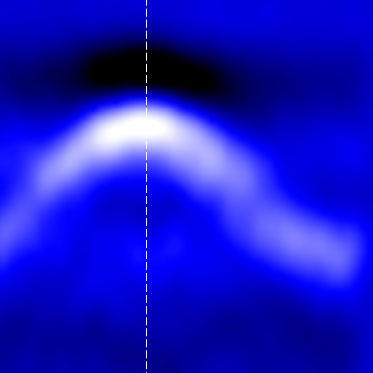
Semiconductor nature of organic materials: Interface formation and extremely low density-of-gap states
Challenge to detect an intrinsic electronic feature of very small DOS of band-gap states (ca. less 10 ppm) at organic/metal interfaces and organic semiconductor solids has been performed. To clarify the weak physical interaction, various kinds of defects are considered. Extrinsic gap state via chemical interaction with metals and charge transfer events at the interface are also studied for the well-defined monolayer systems.
Related articles:
NatMater.(2019), NatMater.17,439(2018), JPhys.40,423002(2017), APL.96,93303(2010), NatureChem.5,187(2013), PRL.110,267602(2013), PRB.89,115319(2014), PRB.92,115012(2015) etc
Instruments
UVSOR:BL6U, BL2B
Labo:2PPE(UC), gas G3-UPS, A1-UPS, IPES, LEIPS
Chiba:PIES, PEEM

Inelastic scattering via molecular vibration and exciton formation
Electronic excitation and molecular vibration states of the FOM surfaces are studied by HREELS to clarify the impacts of weak intermolecular interaction.
Related articles:
SS (2007), JESRP(2009)
Instruments
Chiba:HREELS, FTIR
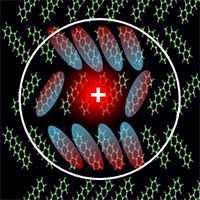
Effects of local electrostatic potential on the electronic structure and interfacial energy-level alignment
Charge rearrangement in the molecule upon weak interaction is studied to clarify the energy-level alignment at the interface. Molecular permanent dipole/quadrupole creates a local electrostatic potential in the well-ordered film, leading a huge difference in the electronic states depending on the orientation. Molecular dipole nanotechnology can be adapted to control the surface work function. We have evaluated physical parameters, such as dielectric constant, dipole moment and polarizability for organic monolayer films. These are all important to clarify the energy-level alignment at the interface.
Related articles:
NatMater(2019), ChemComm46,9040(2010), PRL.106,156102 (2011), PRB.83,195310 (2011), Small.8,1423(2012), PRB.87,85205(2013), PRB.92,115012(2015) etc
Instruments
UVSOR:BL8B
Labo:A1-UPS, LEIPS
Chiba:PIES, PEEM
NUS: STM, STS
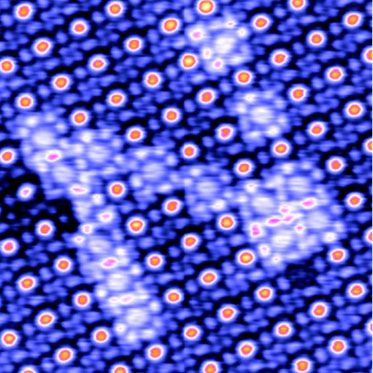
Spectroscopic study on mechanism of self-assembly and molecular recognition
Super-lattice structure of the binary FOM on the surface and mechanism of self-assembly in the films are studied by means of electron spectroscopies.
Related articles:
JPCC. (2020)
Instruments
UVSOR:BL2B
Labo:gas G3-UPS, A1-UPS, LEIPS
Chiba:PIES, PEEM, STM, STS
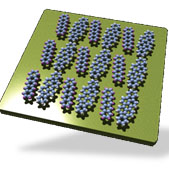
Molecular orientation, bonding distance and film growth at the surface
The structural study is required to understand very complicated electronic structure of molecular solids. Various surface science techniques (STM, NEXAFS, XSW, and other spectroscopies) are used to probe. By using characteristics of extremely high-surface sensitivity and high-vertical spatial resolution of metastable atom beam, we study the wave-function spread at the outermost surface on the molecular films. Especially, flexible soft molecules, crownethers as a candidate for the molecular machine, are fascinating because of their symmetry breaking via weak interactions.
Related articles:
JPCC.112,4643(2008), PRB.81,45418(2010), PRL.106,156102(2011), APL.101,33307(2012), ACSNano.8,1699(2014), JPCC.119,29027(2015) etc
Instruments
UVSOR:BL6U, BL2B
Labo:SPALEED
Chiba:PIES, PEEM
Others:STM, AFM, GIXD, XSW
